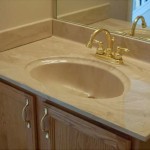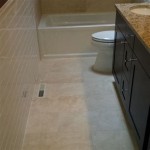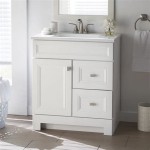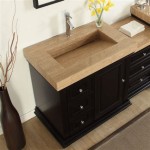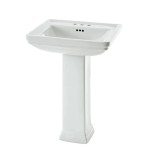How To Take Out a Bathroom Sink Drain Plug
Removing a bathroom sink drain plug can be a necessary task for various reasons, ranging from clearing a blockage to replacing the drain assembly. Understanding the different types of drain plugs and the proper techniques for removal is crucial to avoid damaging the sink or plumbing. This article provides a comprehensive guide to safely and effectively removing bathroom sink drain plugs, covering common plug types and the necessary steps involved.
Identifying the Type of Drain Plug
Before attempting to remove a drain plug, it is essential to identify the type of plug installed in the sink. This identification will determine the appropriate removal method. The most common types of bathroom sink drain plugs include:
Pop-Up Drain Stoppers: These stoppers are operated by a lever located behind the faucet. When the lever is lifted, the stopper rises, allowing water to drain. Conversely, when the lever is pushed down, the stopper seals the drain. Pop-up stoppers are prevalent in modern bathroom sinks and typically involve a linkage mechanism beneath the sink.
Lift-and-Turn Drain Stoppers: Lift-and-turn stoppers are manually operated. The user must lift the stopper slightly and then rotate it to either open or close the drain. These stoppers usually have a visible screw or knob on top for easy manipulation.
Push-and-Seal Drain Stoppers: Also known as push-button or touch-to-close stoppers, these are activated by pressing down on the stopper's surface. Pressing once seals the drain, and pressing again releases the seal, allowing water to flow. They generally have a sleek, minimalist design.
Stopper-less Drains: Stopper-less drains, also known as grid drains, omit the traditional stopper mechanism. These drains feature a fixed grid or grate that prevents large objects from entering the drainpipe but allows water to flow freely. Removal isn't usually a concern because there isn't a stopper mechanism to remove.
Chain and Plug Stoppers: These stoppers are connected to a chain that can be manually inserted into the drain to seal it or removed to allow drainage. These are less common in modern installations but can still be found in older homes.
Preparing for Drain Plug Removal
Once the type of drain plug is identified, the next step involves preparing the work area and gathering the necessary tools. Proper preparation ensures a smooth and efficient removal process.
Gathering Tools and Materials: The following tools are typically needed for drain plug removal:
- Adjustable Wrench: For loosening and tightening nuts and bolts.
- Pliers: For gripping and manipulating small parts.
- Screwdrivers (Phillips and Flathead): Depending on the type of drain plug, different types of screwdrivers may be required.
- Basin Wrench (Optional): Useful for reaching difficult-to-access nuts.
- Penetrating Oil (Optional): To loosen corroded or stuck parts.
- Bucket or Basin: To catch any water or debris.
- Gloves: To protect hands.
- Eye Protection: To protect eyes from splashes or debris.
- Clean Rags or Paper Towels: For cleaning up spills and wiping down parts.
Shutting Off the Water Supply: Before starting any plumbing work, it is critical to shut off the water supply to the sink. Locate the shut-off valves under the sink (usually one for hot water and one for cold water) and turn them clockwise until they are completely closed. Test the valves by turning on the faucet to ensure the water is completely shut off.
Protecting the Sink and Surrounding Area: To prevent scratches or damage to the sink, place a towel or protective mat inside the basin. This will also cushion any dropped tools or parts. Clear the area around the sink to provide ample workspace.
Removing Different Types of Drain Plugs
The removal process varies depending on the type of drain plug. The following sections provide step-by-step instructions for removing common types of drain plugs.
Removing a Pop-Up Drain Stopper:
- Locate the Pivot Rod: Beneath the sink, find the pivot rod connected to the pop-up drain assembly. This rod is typically horizontal and connected to a vertical rod that leads to the stopper.
- Detach the Pivot Rod: Use pliers to gently remove the spring clip or retaining nut that secures the pivot rod to the drainpipe. Once the clip or nut is removed, carefully slide the pivot rod out of the drainpipe.
- Remove the Stopper: With the pivot rod detached, the pop-up stopper can now be removed from the top of the sink drain. If the stopper is stuck, try gently wiggling it or using a small screwdriver to carefully pry it loose. Avoid excessive force, which could damage the stopper or drain assembly.
- Clean the Stopper and Drain: Once the stopper is removed, clean it thoroughly with soap and water to remove any accumulated hair or debris. Also, clean the drain opening to ensure proper drainage.
Removing a Lift-and-Turn Drain Stopper:
- Loosen the Stopper: Most lift-and-turn stoppers have a screw or knob on top. Loosen this screw using a screwdriver. Some stoppers may require an Allen wrench.
- Unscrew the Stopper: Once the screw is loosened, unscrew the stopper from the drain assembly. This may require some gentle twisting and pulling.
- Inspect and Clean: After removal, inspect the stopper for any damage or wear. Clean the stopper and the drain opening thoroughly.
Removing a Push-and-Seal Drain Stopper:
- Identify the Release Mechanism: Most push-and-seal stoppers have an internal mechanism that allows for removal. This mechanism is usually accessed by rotating the stopper.
- Rotate the Stopper: Grip the stopper firmly and rotate it counterclockwise. You may feel or hear a click as the release mechanism engages.
- Pull out the Stopper: Once the release mechanism is engaged, pull the stopper straight up and out of the drain. If it is stuck, try wiggling it gently while pulling.
- Clean and Inspect: Inspect the stopper and the drain for any debris or damage. Clean both thoroughly before reinstalling or replacing the stopper.
Addressing Stuck Drain Plugs: Sometimes, drain plugs become stuck due to corrosion, buildup of debris, or other factors. Here are some techniques to try when dealing with a stuck drain plug:
- Penetrating Oil: Apply penetrating oil around the edges of the stopper and let it sit for 15-30 minutes. This can help loosen corrosion and allow the stopper to be removed more easily.
- Gentle Wiggling: Gently wiggle the stopper back and forth while trying to pull it out. Avoid using excessive force, which could damage the stopper or drain assembly.
- Warm Water: Pour warm water around the stopper to help loosen any buildup of soap or debris.
- Plunger: Use a small plunger to create suction and try to dislodge the stopper.
- Hair Removal Tool: A hair removal tool can be inserted into the drain to grab and remove any hair or debris that may be causing the blockage.
If these techniques do not work, it may be necessary to consult a professional plumber.
Reinstalling or Replacing the Drain Plug: Once the drain plug is removed and the drain is cleaned, the stopper can be reinstalled or replaced. Follow these steps:
- Clean the Drain Assembly: Before reinstalling the stopper, thoroughly clean the drain assembly to remove any remaining debris or buildup.
- Lubricate the Stopper: Apply a small amount of silicone grease to the stopper's O-rings or seals to ensure a smooth and watertight fit.
- Reinstall the Stopper: Insert the stopper into the drain opening and follow the reverse steps of the removal process. For pop-up stoppers, reattach the pivot rod and secure it with the spring clip or retaining nut. For lift-and-turn stoppers, screw the stopper back into the drain assembly and tighten the screw on top. For push-and-seal stoppers, align the stopper with the drain opening and push it into place until it clicks or locks.
- Test the Drain: After reinstalling the stopper, turn on the water supply and test the drain to ensure it is functioning properly. Check for any leaks around the stopper and the drain assembly.
By understanding the different types of drain plugs, preparing properly, and following the appropriate removal and installation steps, individuals can effectively manage bathroom sink drain plug maintenance or replacement tasks with minimal difficulty.

How To Remove A Bathroom Sink Stopper Take Out Pop Up Drain From

How To Replace A Rusty Sink Drain Howtolou Com

How To Replace A Sink Stopper Quick And Simple Home Repair
How To Get A Bathroom Sink Plug Removed When It Won T Un Quora

How To Remove A Sink Stopper The Home Depot

Quick Tip 26 Pop Up Stopper Sticks Misterfix It Com

How To Fix A Bathroom Sink Drain Stopper 4 Easy Solutions

How To Replace A Pop Up Sink Drain Remove The Old Bathroom Stopper Repair
Why Does A Bathroom Sink Drain Slowly Quora

9 Easy Steps To Remove A Bathroom Sink Stopper With Pictures
Related Posts
